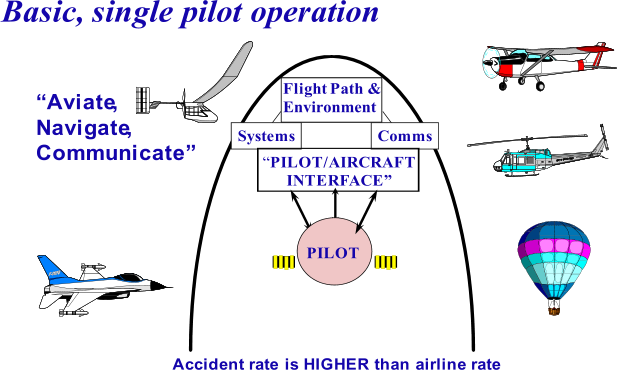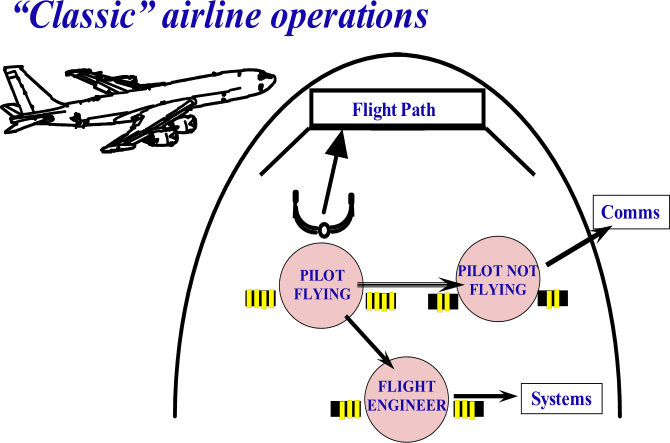The most important system in the aircraft.
The flight deck of an airliner effectively houses a single aircraft control system in which 2 pilots are the main components. But the industry's general failure to treat it as such underlies many "crew caused" accidents.
The vast majority of aircraft, including all basic training types, are designed from the outset for a minimum crew of only one pilot. Licensing authorities base not only the initial qualification for a commercial licence, but also their recurrent qualification requirements for a multi-crew transport, on the basis of potential single pilot operation.
But while the need for each pilot individually to be capable of all operational functions is self-evident, the large transport aircraft with which we are concerned are fundamentally different in that they are not operated by a single pilot, but by a crew of at least two pilots.
This mismatch - do we deal with a pilot or a multi-person crew? - lies at the root of many transport aircraft accidents, for the air transport industry as a whole still tends to talk primarily about "the pilot" and of only as an afterthought of "the crew".
From “pilot”, to “pilots”, to “crew”.
Airline pilots all start by flying single-pilot aircraft. These are used for initial training and in private, military, and general aviation, where the accident rate is higher than in air transport. However, because the consequences of airline accidents are so enormous, in human and financial terms, reducing the transport accident rate (rather than that of the other types of flying) is particularly important.
If we are to achieve this objective, we can no longer operate big transport aircraft as if they are just large, complicated and expensive versions of the Piper Cub.
 Instead it is essential to ensure that airliner SOPs are written which wring every ounce of benefit from the fact that we normally have a two-pilot crew available. Yes, pilot incapacitation is a possibility - that is a fundamental reason why it is essential that every pilot demonstrate an ability to perform all tasks. However, very few accidents have ever occurred solely as a result of degradation from two to one pilot: in most, two “fully functional” pilots were available, but the full capability of both was not actually used.
Instead it is essential to ensure that airliner SOPs are written which wring every ounce of benefit from the fact that we normally have a two-pilot crew available. Yes, pilot incapacitation is a possibility - that is a fundamental reason why it is essential that every pilot demonstrate an ability to perform all tasks. However, very few accidents have ever occurred solely as a result of degradation from two to one pilot: in most, two “fully functional” pilots were available, but the full capability of both was not actually used.
As the original single-pilot airmail aeroplane grew into the larger transport, it became obvious that the single pilot could no longer handle everything himself. So functions such as communication and systems operation were delegated to assistants. Co-pilot, flight engineer, navigator, radio operator were added, though all but the co-pilot have subsequently been eliminated by automation.

But the primary role of “the pilot” however remained the same - direct responsibility for all flight path inputs. Almost universally the pilot with overall responsibility for the flight is also called the "pilot flying”, “Handling pilot”, or some such terminology. During a "First Officer's sector" where the F/O is acting as Pilot-in-Command Under Supervision, then he or she becomes the “pilot flying”. Command - being “in charge” - is regarded as fundamentally inseparable from direct Control. (See also "Role, Rank and Function" and "First Officers' Flying")